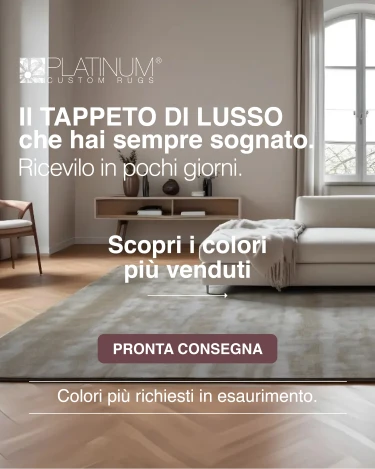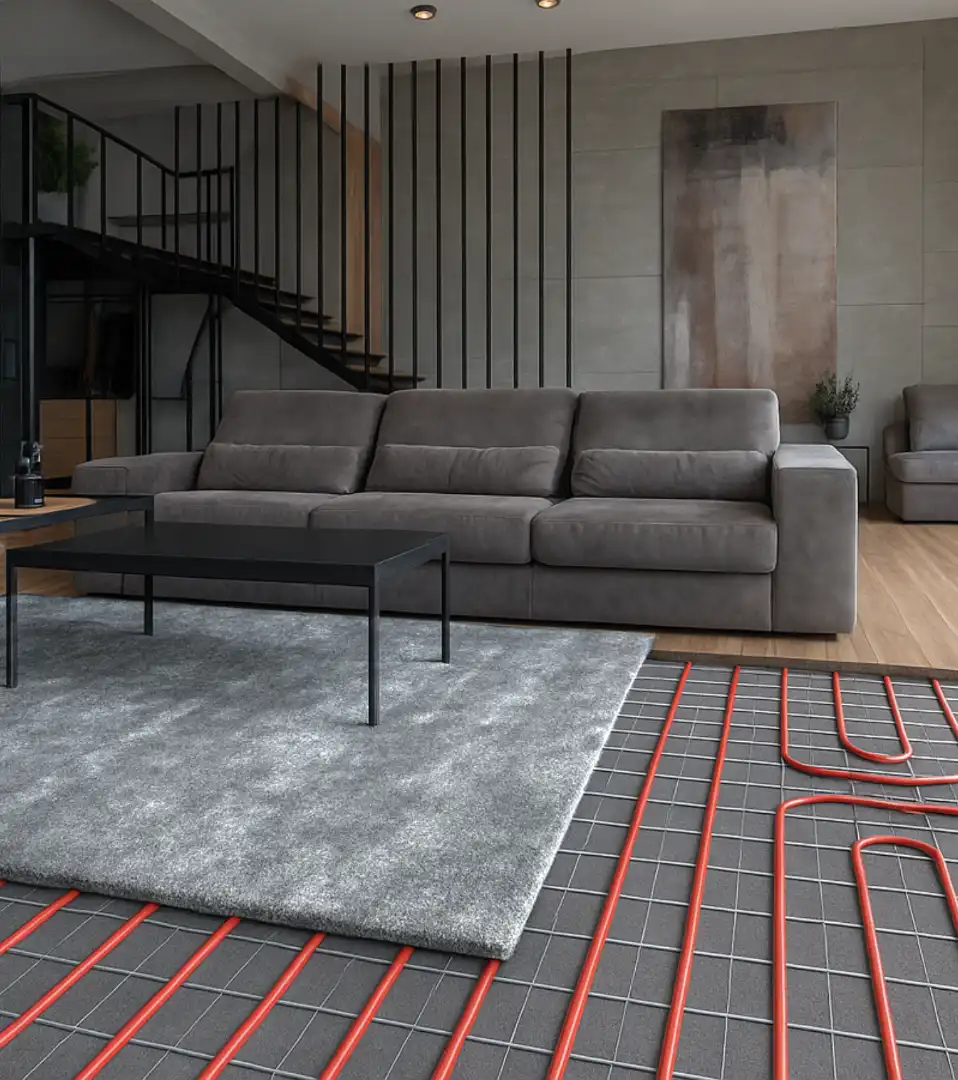
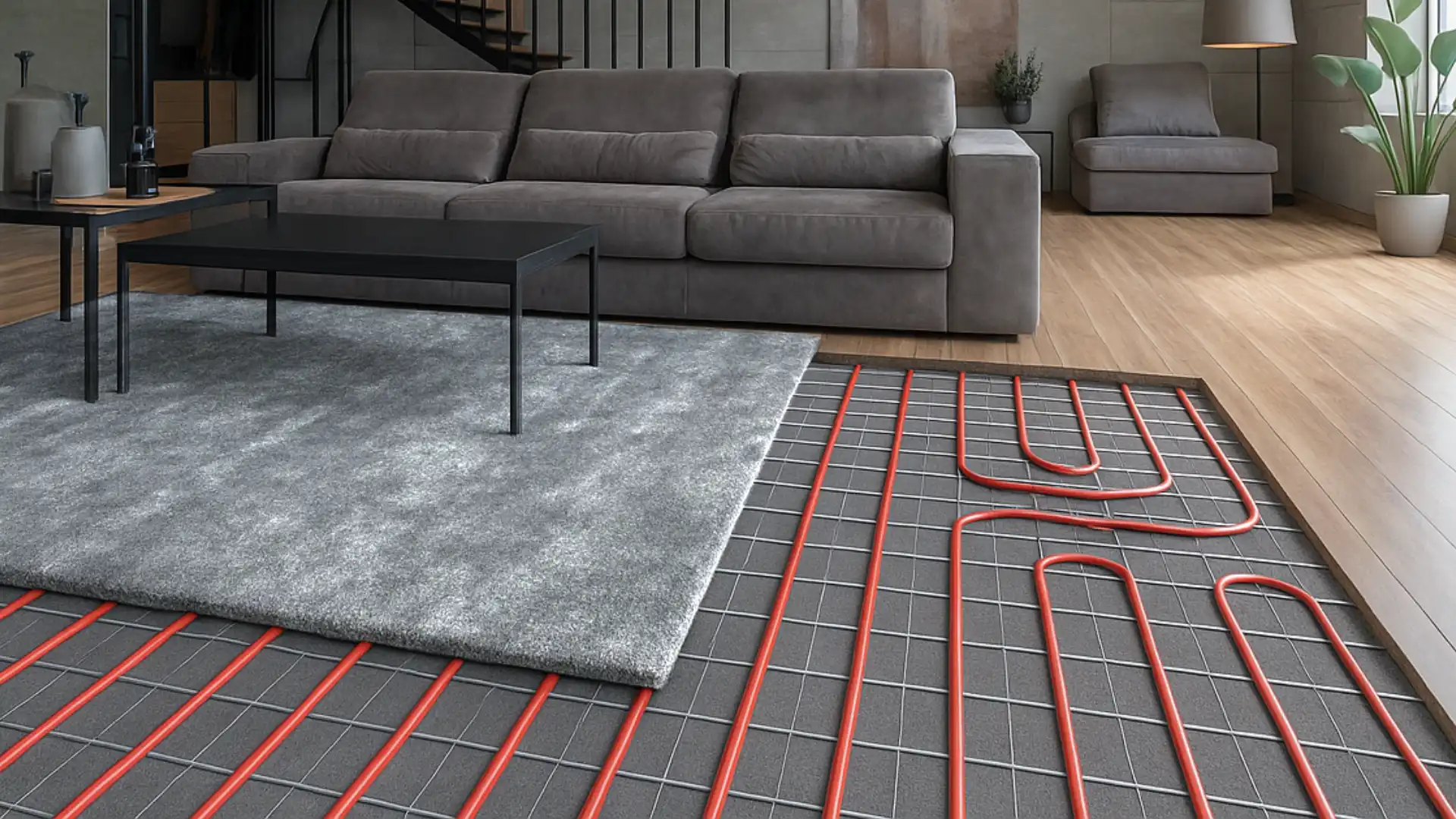
The Pros and cons of rugs for heated floors
Underfloor heating is becoming increasingly popular for the comfort it provides and its energy efficiency. But what happens if we want to add rugs for heated floors, perhaps custom-made, high-end pieces like those we create at Platinum Custom Rugs?
In general, placing a rug on a heated floor is possible, but the success depends on the choice of rug (materials, structure, thickness), its quality, and attention to technical details. These are all aspects we give the highest priority to at Platinum Custom Rugs, ensuring that every single creation is a true textile masterpiece—even for heated floors.
Now it’s time to go deeper: in this article we’ll explore the advantages, disadvantages, practical tips, and rules for using rugs with underfloor heating without compromise.
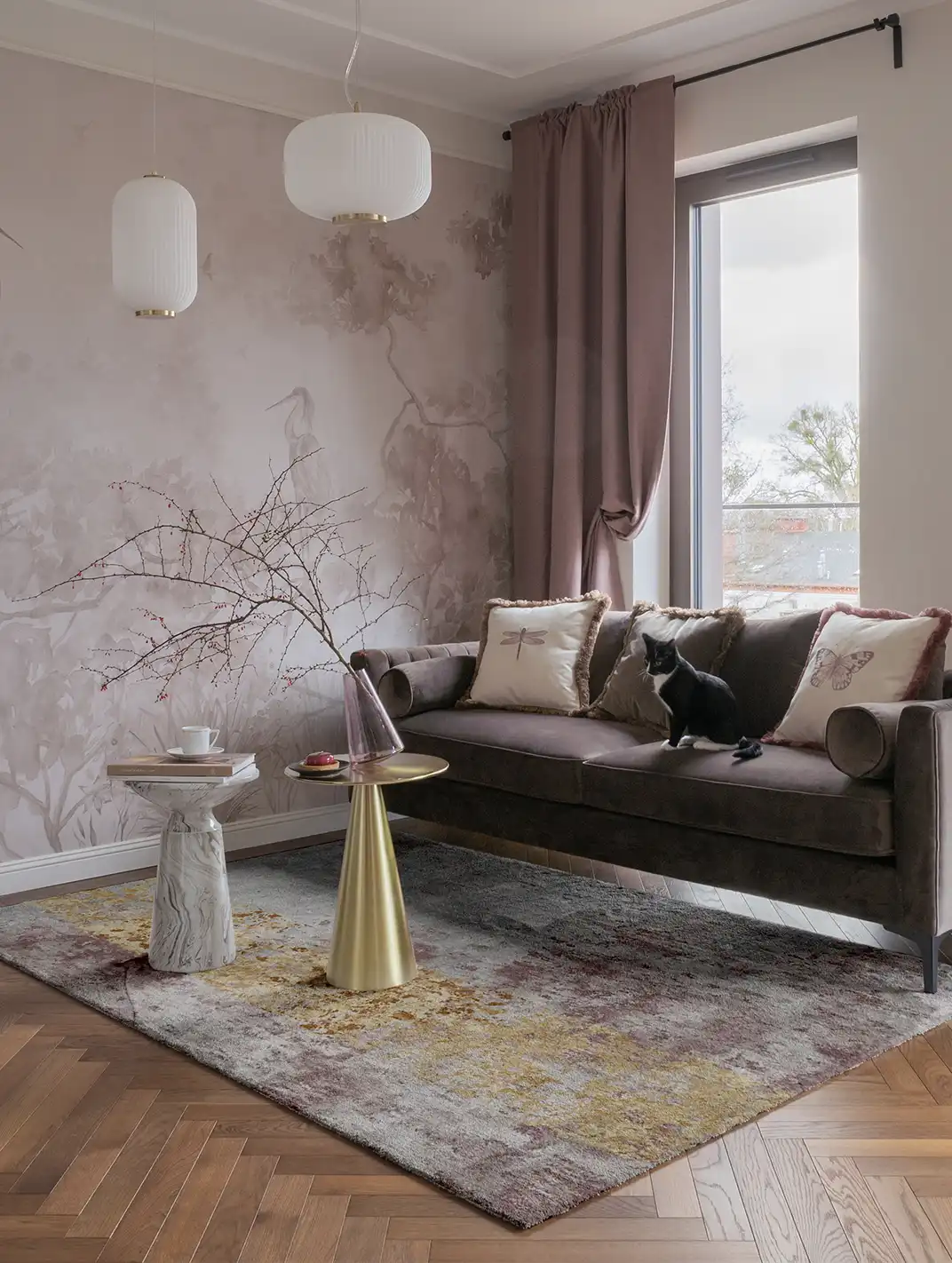
Main advantages
Luxury rugs and underfloor heating: pros and cons
1. More Comfort and Luxury
A rug adds tactile warmth, softness, and a sense of “home.” Even with underfloor heating, a well-chosen rug enhances comfort underfoot and the overall look of the room. This is especially true for custom-made rugs of the highest artisanal quality, like those from Platinum Custom Rugs, where carefully selected materials and exceptional finishes combine beauty with functionality.
2. Zoning and Space Customization
A luxury rug allows you to define areas (living, dining, reading) without structural work—particularly useful in open-plan spaces. With underfloor heating, the rug also creates warm zones to walk barefoot or enjoy convivial moments.
3. Acoustic Insulation and Floor Protection
An exquisitely crafted rug reduces echo and footstep noise while protecting surfaces from abrasion. In some cases, it can preserve the floor from daily wear. These benefits remain true even with radiant panels, provided the right rugs are chosen.
Do you want to create a luxury rug that perfectly fits your floor?
1. Reduced Thermal Efficiency
A rug, especially if thick or with an insulating underlay, creates an extra layer of thermal resistance: less heat passes from the radiant system into the room, and it will take longer to reach the desired temperature—meaning higher energy use and consumption. At Platinum Custom Rugs, we recommend limiting the combined resistance of the rug and underlay, and we guide you toward the best choice.
2. Risk of Hot Spots
Rugs with non-breathable backings such as rubber or foam and those with excessive thickness can cause hot spots, leading to possible overheating of the rug or the radiant panel underneath. This may compromise the system’s performance or damage the floor finish (discoloration, deformation in the case of wood). At Platinum Custom Rugs, we select only structures and backings ideal for contact with heated floors, avoiding any inconvenience.
3. Potential Rug Damage
Some materials, adhesives, or backings are not suitable for constant exposure to heat: they may become brittle, warp, fade, or alter their fibers when subjected to high temperatures over long periods. For this reason, at Platinum Custom Rugs we accept no compromises—we select only heat-stable fibers.
4. Issues with Sensitive Floors
Although underfloor heating is compatible with wooden floors if properly designed, adding an insulating layer such as a thick rug can alter surface humidity and temperature, potentially causing stress or dimensional changes in the wood. At Platinum Custom Rugs, we study solutions that coexist in perfect harmony with all types of wood.
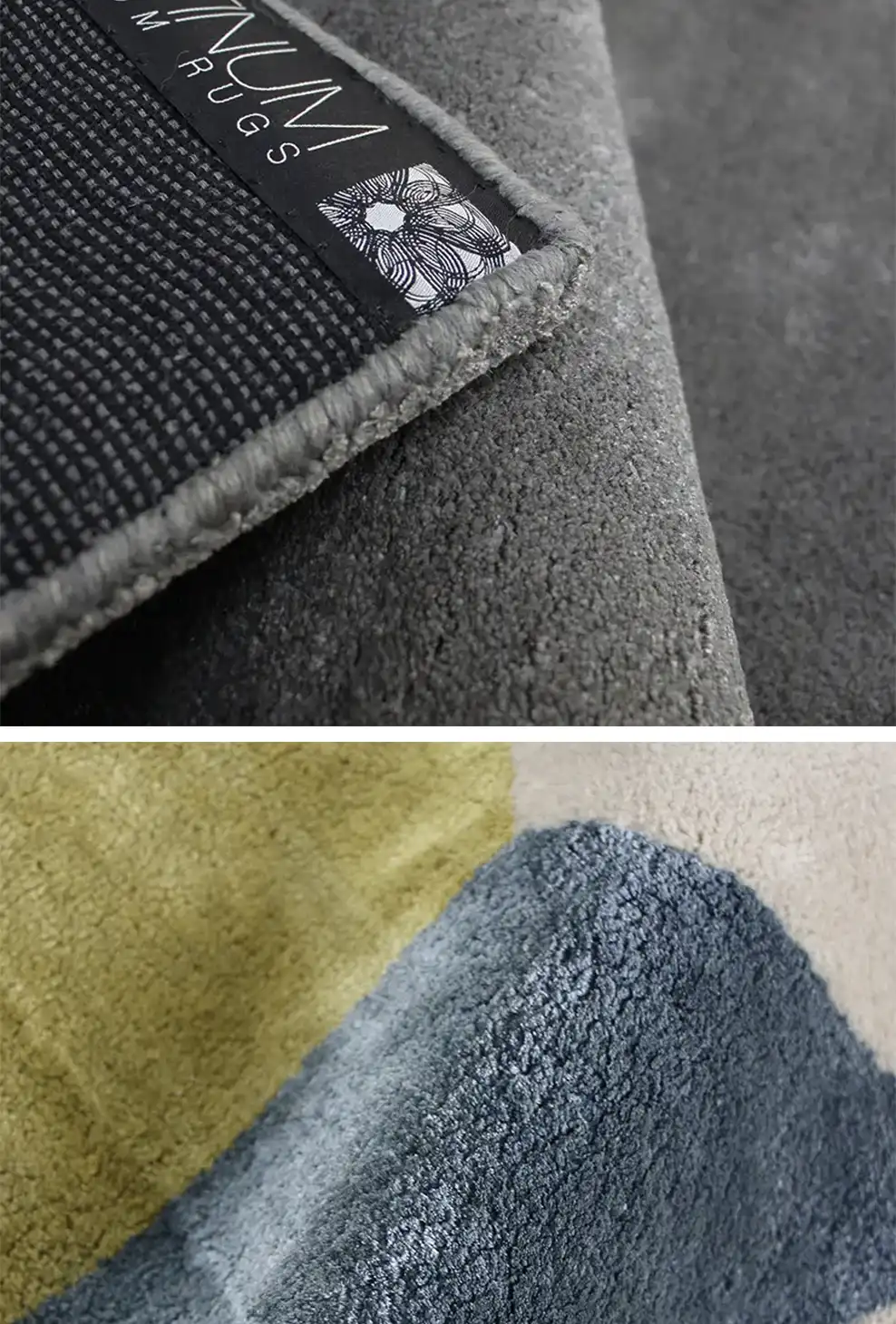
- Rug Thickness : To avoid compromising the efficiency of the radiant system, a rug should preferably have a thickness of less than 1.5 cm when placed on underfloor heating. This is also the recommended threshold for high-quality rugs that aim to maintain proper thermal performance.
- Low Thermal Resistance: It’s better to choose rugs with a composition and structure that allow heat to pass through: natural fibers and flat weaves are more effective compared to backings that act as barriers (e.g., solid rubber backings).
Which Materials to Choose for Rugs on Heated Floors?
Recommended
- Wool: An excellent compromise between aesthetics, comfort, and heat permeability.
- Linen: Especially for stoneware floors (kitchen, bathroom), thin rugs in natural fibers encourage heat conduction.
- Tencel: For heated parquet, it’s advisable to choose low-pile Tencel rugs to allow heat transfer without stressing the wood.
A Smart strategy recommended by Platinum Custom Rugs
A practical tip is to find the right balance: it’s not necessary to cover the entire surface of the room. Placing rugs for heated floors only in the areas where you want greater comfort (e.g., sofa area, bedroom) while leaving other portions of the floor uncovered helps maintain efficiency and limits any potential increase in energy consumption. This hybrid solution combines aesthetics with proper system performance.
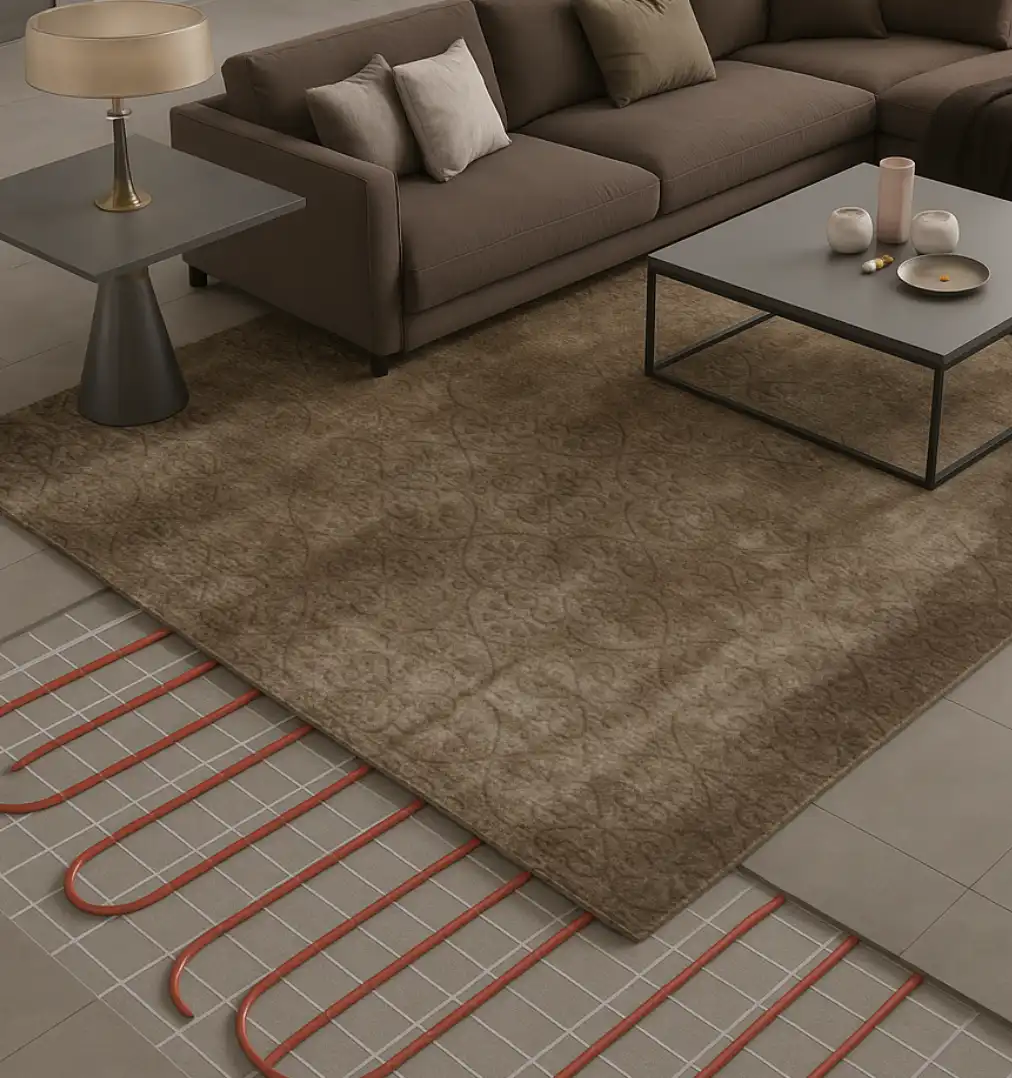
Questions and answers
Will a luxury rug greatly reduce the performance of underfloor heating?
If you choose the right materials and thickness, the impact is minimal. Problems arise when using thick rugs or those with insulating backings: in that case, efficiency drops and issues may occur.
Can I use a handmade rug with a heat pump system?
Yes, but it’s even more important to ensure a lower thermal resistance because heat pumps operate at lower surface temperatures.
Are custom-made luxury rugs better or worse for heated floors?
Custom-made rugs like those from Platinum Custom Rugs can be designed to be fully compatible with underfloor heating: we’ll guide you with recommended thicknesses and ideal materials for use.
Luxury rugs for heated floors: the smart choice is called Platinum Custom Rugs
Placing a rug on a heated floor is absolutely possible—and often desirable—for aesthetics, comfort, and acoustic insulation. We’ve discussed it here as well: the key point is choosing the right rug—natural and premium materials, flat or low-pile structures, controlled thickness, and specific backings. By following our recommendations during the design phase, you get the best of both worlds: the pleasure of a quality rug without compromising the efficiency or durability of the system and the floor.

